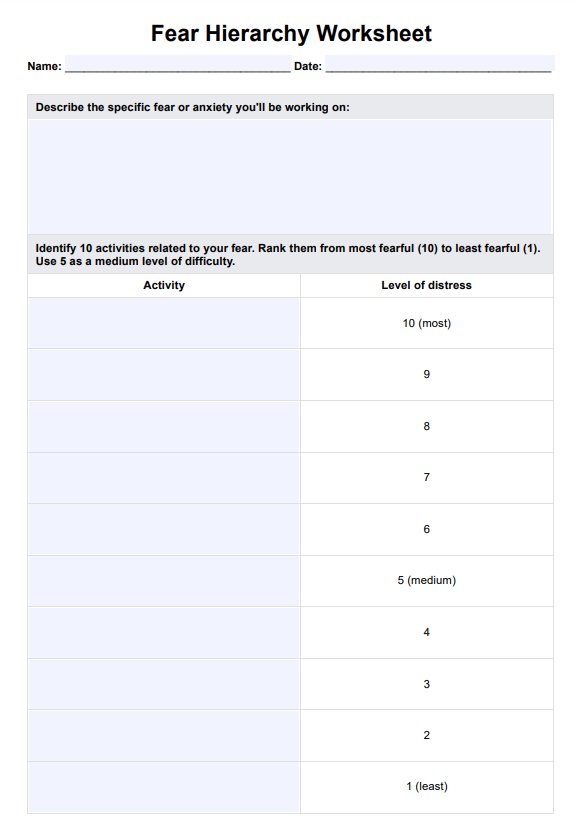The fear hierarchical technique, often called an exposure hierarchy, is a therapeutic method used primarily in cognitive behavioral therapy (CBT) to help individuals confront and manage their fears systematically. This technique involves creating a ranked list of feared stimuli or situations, starting with those that provoke the least anxiety and progressing to those that elicit the most distress.

Fear Hierarchy Worksheet
Help clients systematically navigate their fears with our Fear Hierarchy Worksheet. Download a free PDF.
Use Template
Fear Hierarchy Worksheet Template
Commonly asked questions
The time to complete the Fear Hierarchy Worksheet varies. Still, it typically takes individuals a few sessions to systematically list and address their fears, progressing from lower-level to more challenging ones.
The Fear Hierarchy Worksheet is designed to be a structured and gradual process, making it manageable for individuals. While it may evoke some discomfort initially, its purpose is to help individuals confront fears systematically.
EHR and practice management software
Get started for free
*No credit card required
Free
$0/usd
Unlimited clients
Telehealth
1GB of storage
Client portal text
Automated billing and online payments











